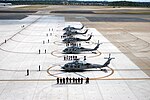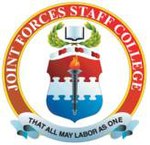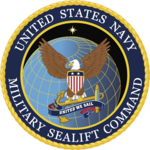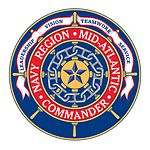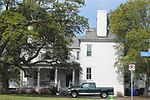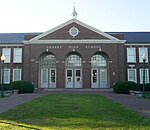Camp Allen
Camp Allen, is a small United States Marine Corps base in Norfolk, Virginia, a satellite of the Naval Station Norfolk. In 1942 the Chief of the Bureau of Yards and Docks (now NAVFAC) wanted the first Seabee training center close to an existing Naval training facility with Norfolk being chosen because of the available land that could be purchased. On 25 March 1942 the Commandant of the 5th Naval District announced that the U.S. Naval Construction Training Center, Naval Operating Base Norfolk had been commissioned 4 days prior. The base was named Camp Allen in memory of the CEC Captain Walter H. Allen founder of the naval construction regiment at Great Lakes Naval Training Center during WWI.Camp Allen later became home to the 3rd Fleet Antiterrorism Security Team (FAST) Companies. The base had a supply warehouse, battalion aid station, and transportation area, but all have been re-purposed. All units are members of the Marine Corps Security Force Regiment, headquartered aboard Naval Weapons Station Yorktown.
Excerpt from the Wikipedia article Camp Allen (License: CC BY-SA 3.0, Authors).Camp Allen
Souda Bay Avenue, Norfolk
Geographical coordinates (GPS) Address Nearby Places Show on map
Geographical coordinates (GPS)
| Latitude | Longitude |
|---|---|
| N 36.928333333333 ° | E -76.293888888889 ° |
Address
Souda Bay Avenue
Souda Bay Avenue
23551 Norfolk
Virginia, United States
Open on Google Maps

